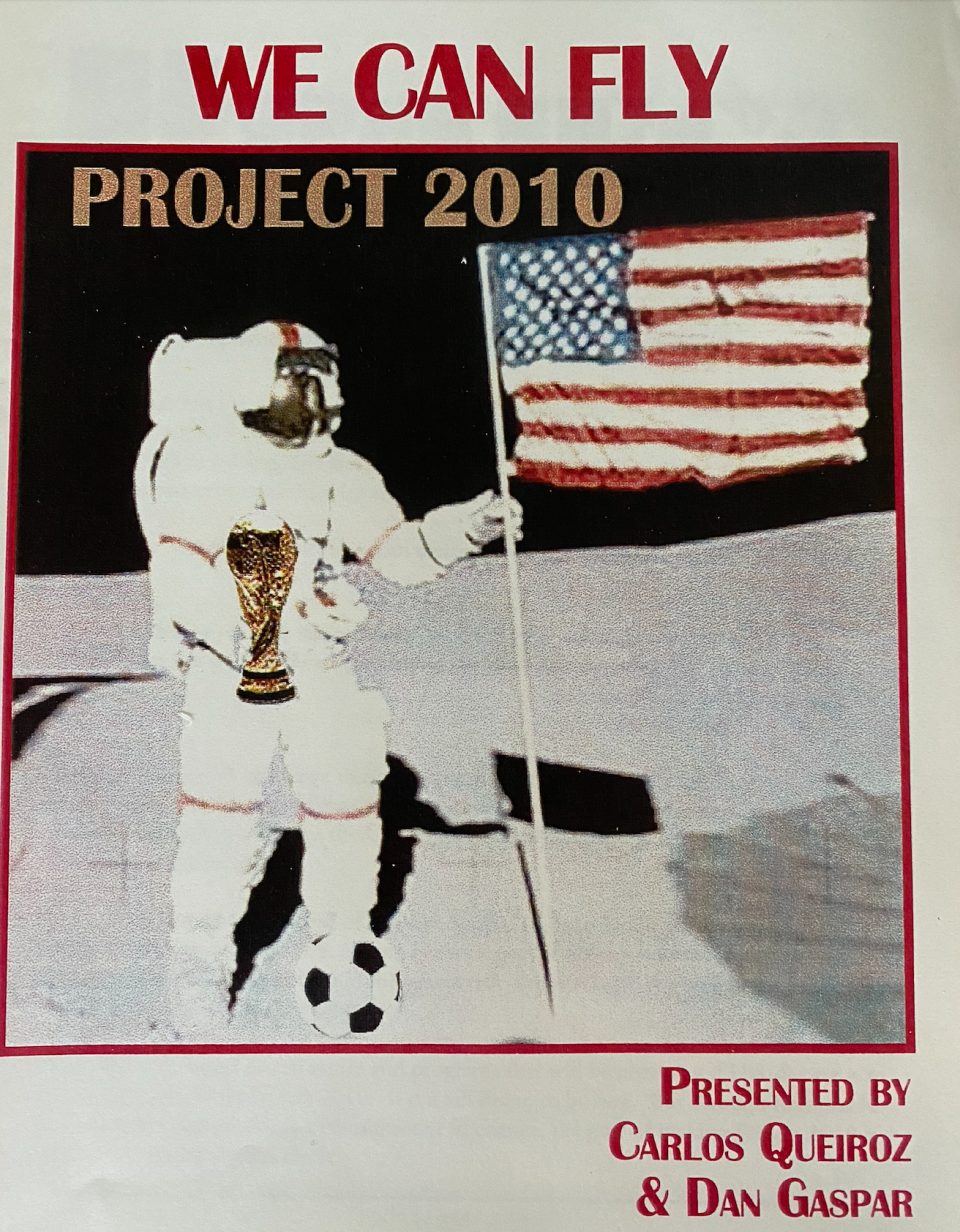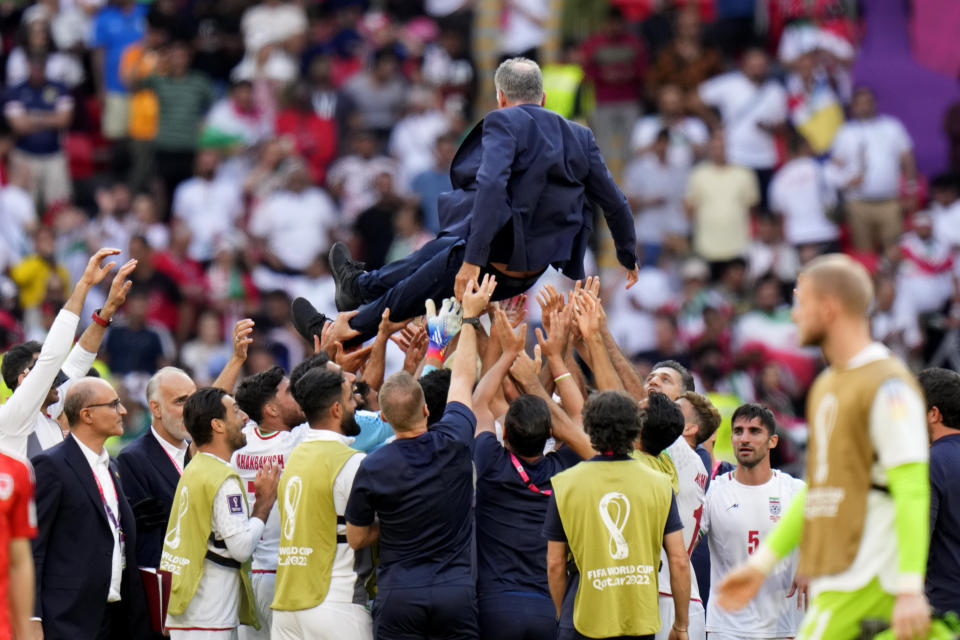DOHA, Qatar — The 69-year-old globetrotting polyglot who’ll try to topple the U.S. men’s national team at the 2022 World Cup on Tuesday once spent an entire year trying to fix American soccer.
Carlos Queiroz has coached on five continents, at four World Cups and at some of the world’s biggest clubs. He’s now the mastermind behind an Iranian team hellbent on sending the Americans home from Qatar early.
But in 1998, he lived out of a second-floor Tampa condo that once caught fire. He spent the year traversing the United States on commercial flights, speaking with hundreds of coaches and players at all levels of the sport. He’d been hired by U.S. Soccer to diagnose its ills and explain how it could win the men’s World Cup by 2010. And that, in between “all-you-can-eat” meals, on endless summer days, is what he tried to do.
His final report, entitled Project 2010, likened U.S. Soccer’s goal to the Apollo 11 moon landing. Its cover depicted an astronaut with an American flag in one hand and the men’s World Cup trophy in another. Queiroz wrote it alongside his Portuguese-American goalkeeper coach, Dan Gaspar, who remembers working “at an insane pace.” On one memorable night, around midnight, Queiroz asked Gaspar, whom he calls “Danny,” to take a seat. He then paced around the Tampa condo for three hours, challenging Gaspar “to make the sacrifices to be involved in a winning business.”
Together, over 113 pages, they outlined recommendations for reforming a player development system that many felt was “broken.” Their proposals led to the establishment of U.S. Soccer’s U-17 residency program, a forerunner of the overhauled nationwide system that exists today. “I think the report served as a foundation for a number of things that have been implemented,” Gaspar says of Project 2010. Queiroz, at a Monday news conference, notes that he “help[ed] football in the United States to grow up.”
But Gaspar’s main takeaway wasn’t the report’s impact; it was the fascinating man he got to know along the way, the one currently devising a plan to stifle the U.S. men’s national team.
“It’s his intensity level. It’s his attention to detail,” Gaspar says of Queiroz. “It’s his standard of professionalism. It’s the obsession that he has every second, every minute, every hour, every day, every week, every month of the year, to win in whatever project he’s involved in.”


Project 2010
Queiroz’s meandering career, which began as a youth player in colonial-era Portuguese Mozambique, first flickered onto the radar of American soccer officials in the late 1980s and early 90s, when he coached Portugal to back-to-back Under-20 World Cup titles. He developed a relationship with Francisco Marcos, a longtime Portuguese-American soccer executive, and with Sunil Gulati, who’d eventually serve as the vice president and president of U.S. Soccer for two decades.
His bond with Gaspar, though, developed by incredibly random chance. Queiroz had taken over Portugal’s senior team in 1991. The following year, he brought his team to a four-nation tournament organized by U.S. Soccer — and specifically to Connecticut, where Gaspar, a Portuguese-American who ran goalkeeper camps, happened to live.
When Gaspar learned of their visit, for a game at Yale University, he contacted the Portuguese Club of Hartford (Conn.) and arranged to host them. He struck up a friendship and a professional relationship with Queiroz. After deep conversations about goalkeeping, he latched onto Queiroz as an eventual right-hand man.
They grew together at Sporting CP in Lisbon, then with the New York/New Jersey MetroStars in Major League Soccer’s inaugural season. After less than a year, they left Jersey for Japan — which is where they were when Gulati and then U.S. Soccer president Alan Rothenberg decided to pursue the overly ambitious goal of winning the men’s World Cup in Rothenberg’s lifetime.
U.S. Soccer, as Gulati says, “wanted an outside set of eyes to look at the landscape of the United States, and tell us where we might be able to do better.” He remembers valuing Queiroz’s success at youth levels, plus his multilingualism. He flew to Japan for a private meeting with Queiroz, and convinced him to return to the U.S. as a “technical consultant.”
There was speculation at the time, perhaps even an assumption, that U.S. Soccer had hired Queiroz with a view toward eventually elevating him to USMNT head coach. But all he wanted to do, for months and months in 1998, was work on the task at hand. He drove and flew to training camps and conventions, to matches and FIFA meetings and symposiums. He interviewed everybody, from Bruce Arena to administrators to sportswriters. He lived mostly out of hotels, initially two-to-a-room with Gaspar, who urged U.S. Soccer leadership to accommodate Queiroz better. Queiroz, though, “did not make demands,” Gaspar says.
After months of travel and learning, the two sat down to watch 1998 World Cup games during the day and write Project 2010 at night. “My dear friends,” Queiroz wrote on Page 6, “as Americans you live in a land rich with human resources and unlimited potential, where hopes and dreams frequently come true. During the years leading up to 2010, you have every opportunity to put the infrastructure in place to create an environment where the sport can move forward in a meaningful way.”
But he also warned them: “As you read the report, please don’t be offended by my frank observations.”
He and Gaspar were occasionally blunt about structural flaws in the elite player pathway. After a couple of edits, they printed up their final product. Gaspar drove to New York to deliver the first hard copy to Gulati.
“We didn’t want this document to be the bible,” Gaspar remembers, but it became a highly anticipated “dynamic manual.”
“It wasn’t supposed to be a recipe book,” Gulati said of the initial mandate, “but that’s what [Queiroz] laid out — a bunch of programmatic things that we could do.”
The U.S.’s unrealistic expectations
The final report entertained U.S. Soccer’s unrealistic ambitions of World Cup glory by 2010, but primarily provided critiques and an 11-prong plan for gradual improvement.
“What surprised me the most prior to the [1998] World Cup were the illusions about just how good the U.S. team was,” Queiroz wrote. “These illusions revealed a naiveté which failed to come to grips with just how far the U.S. team must improve, before it is ready to compete with the rest of the world in the really big competitions.”
Queiroz largely took aim at youth soccer. “In my country of Portugal, we have a saying: ‘Don’t put all your eggs in one basket,’” he wrote. “But this is exactly what the United States does when it invests time, energy and money into preparation of the youth national teams, but does nothing to improve the competitive system that provides for player development.”
He all but pleaded with U.S. Soccer to reconsider its obsession with national team performance and prioritize lower levels of the pyramid.
“If I suffer from an illness, I can take medicine to reduce the pain, but it doesn’t necessarily mean that I will be free of disease,” he wrote, as an analogy. “Likewise, the U.S. could have a good result in the World Cup, but it might not be the best indicator of whether or not we are progressing in the right direction at all levels at home.”
He and Gaspar then sketched out their “Blueprint for Success.” They proposed a restructuring of competitions for teenagers, including interstate events and a national under-19 league. They touched on scouting, infrastructure and coaching education, and many other areas that U.S. Soccer, and later MLS, have since prioritized.
“I sincerely hope that God will illuminate my ideas so that they are understandable and useful as you pursue success for soccer in the USA,” Queiroz wrote in conclusion. “Wishing you every success in soccer, I remain a lifetime friend.”


The friend becomes the foe
Nearly a quarter-century after he wrote those words, after stops at Manchester United and Real Madrid, and with the national teams of Portugal, South Africa, Colombia and Egypt, Queiroz’s American connections will come full circle.
He led Iran to the 2014 and 2018 World Cups, then returned in 2022 to stabilize a team mired in chaos. He inspired his players to a dramatic win over Wales on Friday, which elevated them into second place in Group B. They need only a draw with the U.S. on Tuesday to advance and eliminate the Americans, while the U.S. needs to win to advance.
“Tomorrow will be a very, very special game for us,” Queiroz said Monday. But then he noted: “For me, it’s also very, very, particularly special.”
He spoke glowingly about a U.S. team that, perhaps, indirectly, his 24-year-old recommendations have helped shape. He called them Group B’s best team through two games. He said they’ve “jumped from soccer to football,” to “modern football.” Referencing his time working for U.S. Soccer, he said the current USMNT is “a different football team from the United States that I saw and I met at the beginning.”
“So,” he continued, “we want to play with full respect [on Tuesday].”
“But with a strong wish to get the result to move to the second round.”
